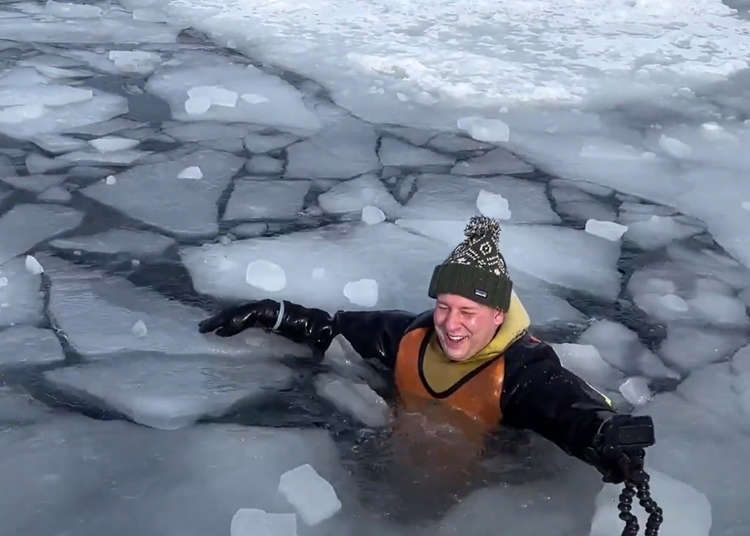
Found in eastern Hokkaido, about two hours away from Narita Airport, Memanbetsu Airport is the perfect gateway to the Shiretoko Peninsula, a World Natural Heritage. This area has many attractive spots that can deliver fulfilling natural and cultural experiences unique to Hokkaido. This article will introduce some of our favorite sightseeing spots near Memanbetsu Airport.
- Table of Contents
-
- 1. Shiretoko Peninsula and the wintry spectacle of drift ice
- 2. Oshinkoshin Falls: Shiretoko’s greatest waterfall
- 3. Surround yourself with natural landscapes at Bihoro Pass
- 4. Lake Kussharo: Japan’s greatest caldera lake
- 5. Lake Mashu: One of the world’s clearest lakes
- 6. The mystical, cobalt-blue Kaminoko Pond
- 7. Mount Io / Atosanupuri, an active volcano
- 8. Abashiri Prison Museum: Japan’s only prison-themed museum
- 9. Learn about northern life and culture at the Hokkaido Museum of Northern Peoples
- 10. Get your fill of drift ice at Okhotsk Ryu-hyo Museum
- Just a single flight away from Narita International Airport! Come to Memanbetsu Airport to enjoy Japan’s northern wilds
1. Shiretoko Peninsula and the wintry spectacle of drift ice
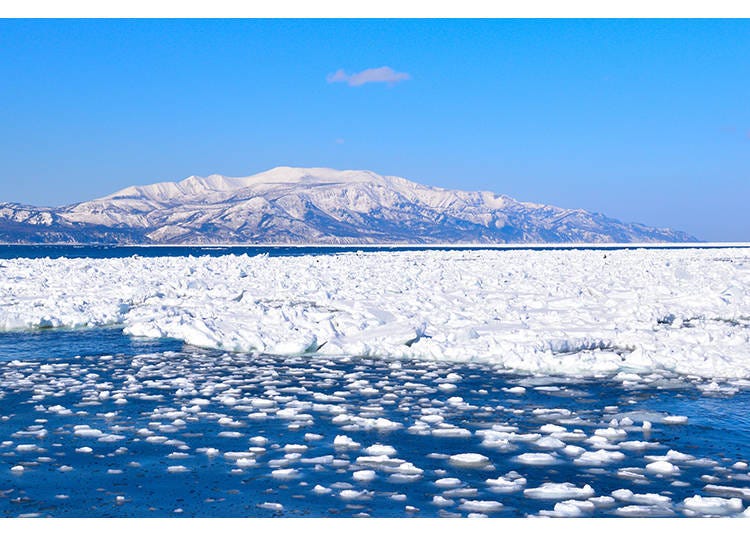
Shiretoko was designated a UNESCO World Natural Heritage in 2005. The Shiretoko Peninsula pushes into the Sea of Okhotsk. In winter, people come from all over to see the drift ice. Hokkaido is the only place in Japan where drift ice can be seen. Thanks to the way the Shiretoko Peninsula juts out, it blocks the drift ice in such a way as to cause floes to bunch up, making for its famous winter scenery. The white ice covering the blue water is a breathtaking sight: truly, a work of art by nature. One way to enjoy it is to board the Abashiri Drift Ice Sightseeing & Icebreaker Ship Aurora, which leaves from Abashiri Port, and enjoy a brief cruise through the ice. The ship provides sightseeing tours in summer, too.
-

-
Address
Minami three Higashi 4-5-1, Abashiri-shi, Hokkaido, 093-0000
View Map -
Nearest Station
Abashiri Station (Sekihoku Main Line / Senmo Main Line)
10 minutes by car
- Phone Number 0152-43-6000
-
Address
Minami three Higashi 4-5-1, Abashiri-shi, Hokkaido, 093-0000
2. Oshinkoshin Falls: Shiretoko’s greatest waterfall
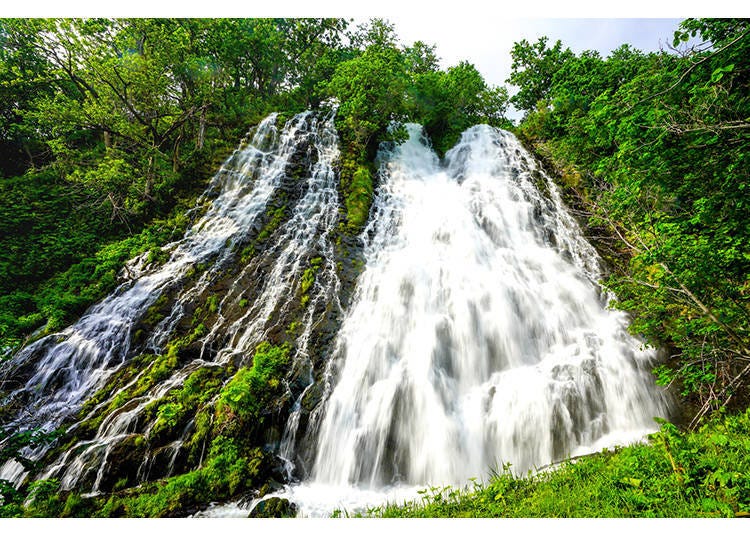
Oshinkoshin Falls is famous as Shiretoko’s largest waterfall. Its waters tumble down an 80-meter slope 30 meters wide, breaking into two streams on the way down. From this, some people also call it the “twin beauty waterfall,” and it earned a place in Japan’s Top 100 Waterfalls. Part of what makes it so appealing is how each season brings out a different expression in the waterfall: for instance, springtime snowmelt feeds the waterfall for an exciting rush, while in winter, the entire waterfall is blanketed in snow and ice. There’s an observation deck above the waterfall that also has a view of the Sea of Okhotsk and Shiretoko mountains.
-

-
Address
Shari-cho, Shari-gun, Hokkaido Utoro, 099-4354
View Map -
Nearest Station
Shiretoko-Shari Station (Senmo Main Line)
42 minutes by bus
- Phone Number 0152-22-2125
-
Address
Shari-cho, Shari-gun, Hokkaido Utoro, 099-4354
3. Surround yourself with natural landscapes at Bihoro Pass
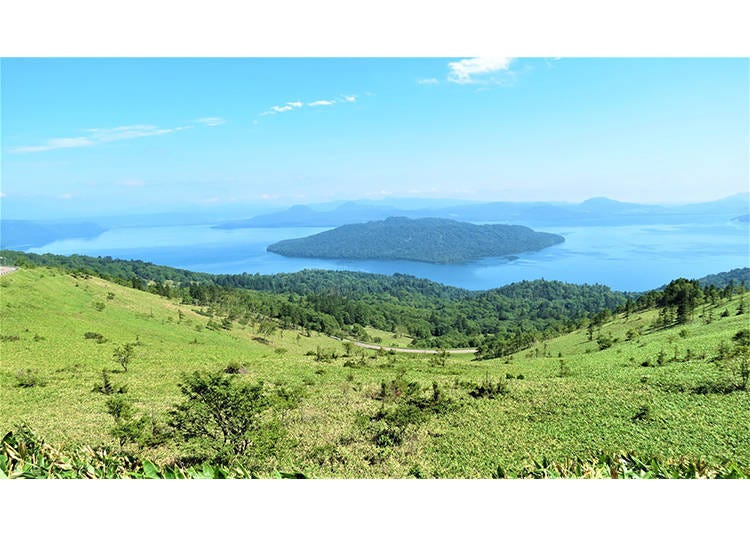
Bihoro Pass is a mountain pass 525 meters up that provides incredible views of Shiretoko. This area is within Akan Mashu National Park, and from Bihoro Pass Observatory, you can see Japan’s largest caldera lake, Lake Kussharo, in addition to Mount Io and Shiretoko’s other impressive mountains on a clear day. Some believe its natural landscapes to be the best in all of Japan. With some luck, you might also see the famous ‘unkai’ – a phenomenon in which the area fills with a sea of clouds – at dawn, or the glittering diamond-studded sky at night. At the peak of the pass is the popular Bihoro-toge Roadside Rest Area, a well-equipped facility with educational videos and exhibits, a dining hall, and a rest space.
4. Lake Kussharo: Japan’s greatest caldera lake
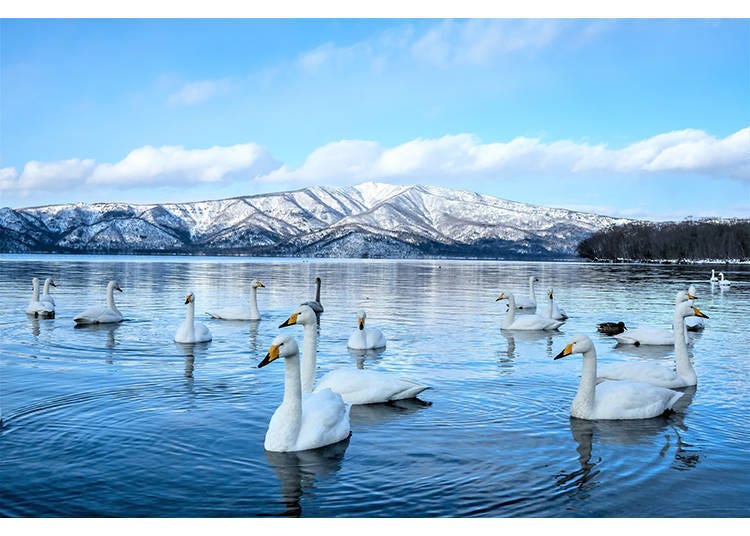
A caldera lake is a lake that forms in the crater left after the eruption of a mountain, and Kussharo is Japan’s greatest. In particular, of Japan’s lakes that freeze over in winter, Kussharo is the widest. It’s beautiful in every season, but the autumn foliage is particularly lovely. It’s also famous for hosting swans that migrate from Siberia each year between November and April, and for as a Hokkaido hot spring destination, accessible to all that visit the lakeshore area.
-

-
Address
Lake Kusshiyaro, Teshikaga-cho, Kawakami-gun, Hokkaido, 088-3341
View Map -
Nearest Station
Kawayu-Onsen Station (Senmo Main Line)
15 minutes by car
- Phone Number 015-482-2200
-
Address
Lake Kusshiyaro, Teshikaga-cho, Kawakami-gun, Hokkaido, 088-3341
5. Lake Mashu: One of the world’s clearest lakes
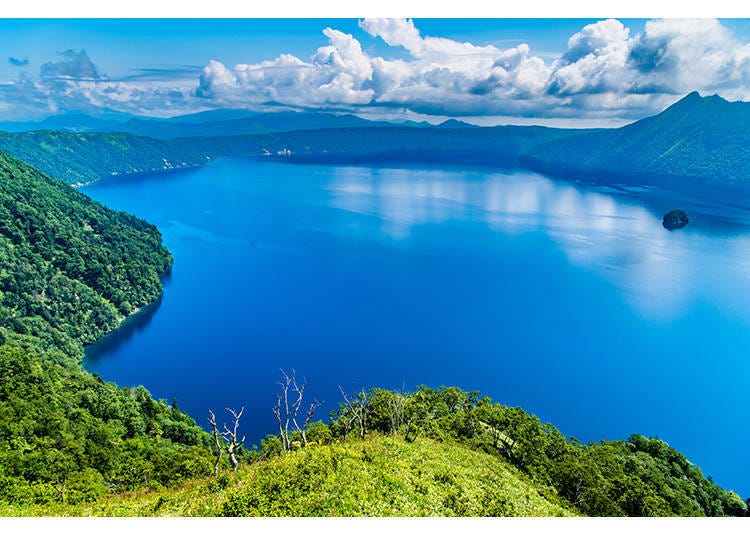
Lake Mashu is another caldera lake, which has the distinction of being one the world’s most transparent. The Michelin Green Guide Japan, a French guidebook, gives it the highest rating of three stars. As there are no rivers connecting to the lake, it sees no inflow of organic matter or runoff, and maintains a constant water level. The still and vast blue this produces is known in Japan as “Masshu Blue.” Lake Mashu is also known for impressive mists, so people crowd the lake on clear days to see its fleeting and beautiful blue surface.
-

-
Address
Lake Mashu, Teshikaga-cho, Kawakami-gun, Hokkaido, 088-3201
View Map -
Nearest Station
Mashu Station (Senmo Main Line)
20 minutes by car
- Phone Number 015-482-2200
-
Address
Lake Mashu, Teshikaga-cho, Kawakami-gun, Hokkaido, 088-3201
6. The mystical, cobalt-blue Kaminoko Pond
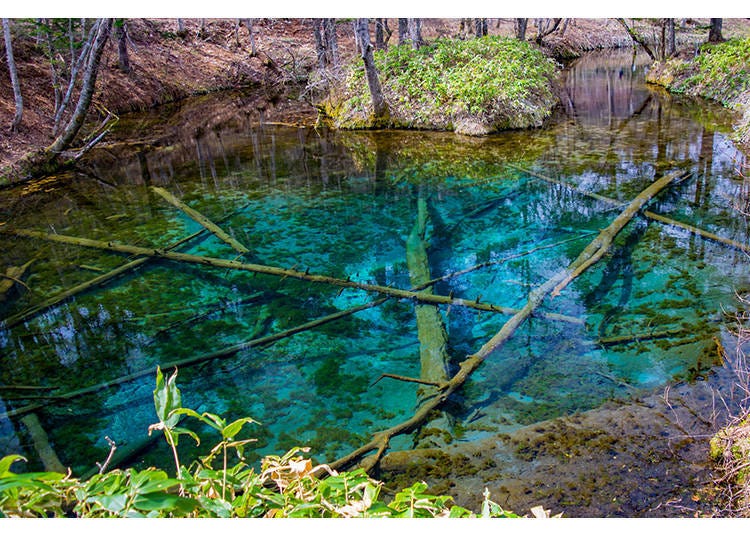
Lake Mashu is also known as “Kaminoko,” or a lake of the gods. This pond, found in the mountains near Lake Mashu, was named out of a belief that it was formed by underground channels flowing from Lake Mashu. Depending on the weather, its surface will glisten with iridescent and fantastical blue hues, drawing many photographers. The pond has a 220-meter circumference and is 5 meters deep, formed by 12,000 tons of water that bubble up from underground every day. Its waters are very clear and cold year-round, which prevents trees that fall into the pond from rotting. The trees are like stacked fossils, and breathtakingly beautiful to behold.
7. Mount Io / Atosanupuri, an active volcano
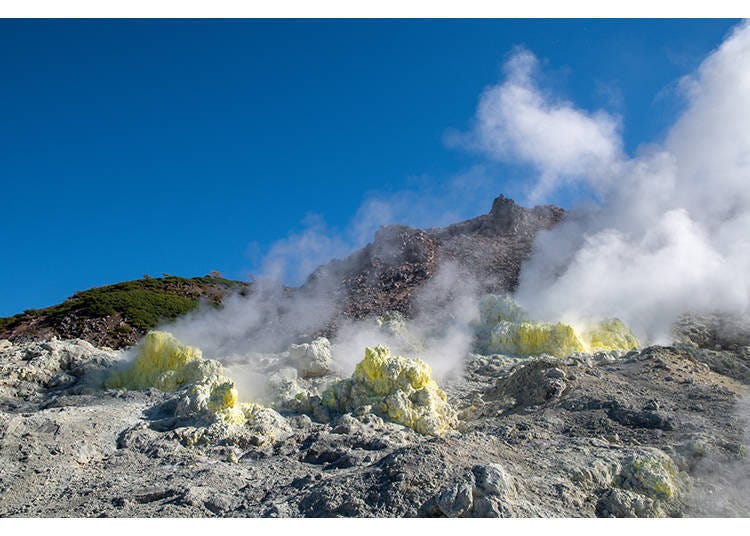
Mount Io is also in Akan Mashu National Park, between Mashu and Kussharo Lake. Literally named “Sulfer Mountain,” it’s a famous sightseeing destination for its past as a mountain mined for sulfur, and as an active volcano. It’s also the source of the nearby Kawayu Onsen hot spring. The mountain’s official name is Atosanupuri, an Ainu name that means “naked mountain.” Even today, gas erupts from its barren rock face, steeping the surroundings in the scent of sulfur. The unique scenery looks almost like something from another planet, and serves as a reminder of what goes on far beneath our feet.
8. Abashiri Prison Museum: Japan’s only prison-themed museum
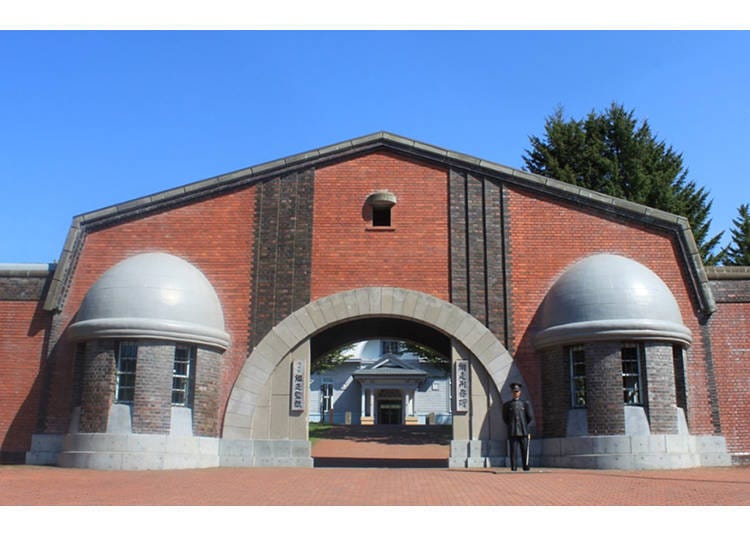
Abashiri Prison was once said to be at the “ends of the earth.” This museum is unique in Japan as its preserves and exhibits the original buildings to the public. Eight of these buildings are designated as Important Cultural Assets, having been judged as architecturally valuable. Visitors will find many things to see and do, including realistic recreations and a “prison experience theater” in which people can feel the lives of inmates at the time. A popular activity is to head to the dining hall, where you can try a meal similar to that served at the current Abashiri Prison.
-

-
Address
1-1, Yobito, Abashiri-shi, Hokkaido, 099-2421
View Map -
Nearest Station
Abashiri Station (Sekihoku Main Line / Senmo Main Line)
7 minutes by bus
- Phone Number 0152-45-2411
-
Address
1-1, Yobito, Abashiri-shi, Hokkaido, 099-2421
9. Learn about northern life and culture at the Hokkaido Museum of Northern Peoples
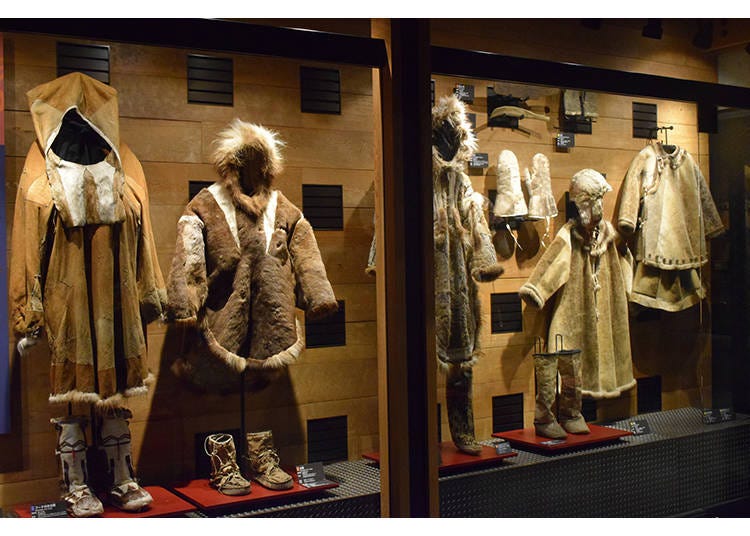
The Hokkaido Museum of Northern Peoples is a facility dedicated to researching and sharing the culture and history of people that live in northern regions. This, of course, includes the Hokkaido’s native Ainu people, but also cultures like the Inuit of Greenland and Sami of Scandinavia. You’ll be amazed by the comprehensive exhibits of both the tools and clothing Northern Peoples need to survive in cold environments, their religious items, crafts, and even psychology. We recommend checking out their gift shop, which has many souvenirs not available anywhere else.
-

-
Address
309-1, Shiomi, Abashiri-shi, Hokkaido, 093-0042
View Map -
Nearest Station
Abashiri Station (Sekihoku Main Line / Senmo Main Line)
14 minutes by bus
- Phone Number 0152-45-3888
-
Address
309-1, Shiomi, Abashiri-shi, Hokkaido, 093-0042
10. Get your fill of drift ice at Okhotsk Ryu-hyo Museum
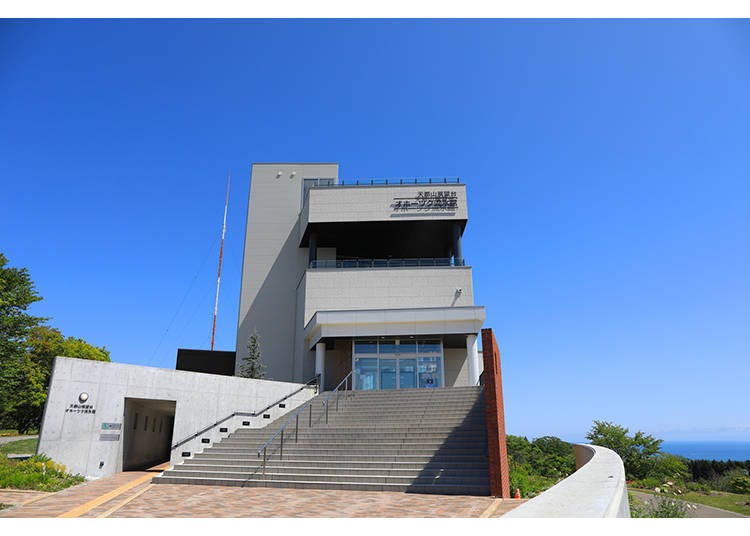
The Okhotsk Ryu-hyo Museum is a facility where you can learn about the drift ice and the creatures of the Sea of Okhotsk. They have one of Hokkaido’s greatest projection mapping setups, an exhibit dedicated to clione (a tiny type of floating sea slug also known as “sea angels”), 4K footage of drift ice, an exhibit that lets you touch recreations of drift ice in a room chilled to -15℃. One more point of interest is their Mount Tento observation deck, which overlooks the Shiretoko Peninsula and the Sea of Okhotsk. You can look out at the incredible scenery in all directions, an experience not to be missed.
-

-
Address
244-3, Tentozan, Abashiri-shi, Hokkaido, 093-0044
View Map -
Nearest Station
Abashiri Station (Sekihoku Main Line / Senmo Main Line)
15 minutes by bus
- Phone Number 0152-43-5951
-
Address
244-3, Tentozan, Abashiri-shi, Hokkaido, 093-0044
Just a single flight away from Narita International Airport! Come to Memanbetsu Airport to enjoy Japan’s northern wilds
-
Memanbetsu Airport女満別空港
- Address 201-3 Memambetsu-Chuo, Ozora-cho, Abashiri-gun, Hokkaido 099-2371
The Memanbetsu area and eastern Hokkaido are rich in delights like magnificent scenes of nature for all seasons, particularly winter, and the culture that prospered amongst it. There’s no doubt you’ll find experiences unlike anywhere else and make lasting memories. We hope you’ll use Memanbetsu Airport as your gateway to each of these sightseeing spots.
- Area
- Category
*Prices and options mentioned are subject to change.
*Unless stated otherwise, all prices include tax.
Popular Tours & Activitiess
-
Ad

Smart Ways to Avoid Crowds and Enjoy a Safe, Comfortable Trip to Otaru.
-

7 Iconic Hokkaido locations that will make your Instagram shine
by: Himanshi Shah
-

Expert-Recommended: 9 Hakodate Hotels Serving Up the Best Breakfasts in Town
by: Nobuka Kawashima
-

Great Local Eats: 5 Expert-Recommended Local Chain Restaurants in Hakodate
by: Nobuka Kawashima
-
Ad

Smart Ways to Avoid Crowds and Enjoy a Safe, Comfortable Trip to Noboribetsu Onsen
-

Scenic Road Trip from Hakodate to Matsumae: Stunning Views, Traditions, and Tasty Delights
by: Nobuka Kawashima
-

Otaru Travel Guide: Inside Hokkaido's Leading Destination (Sightseeing, Food, and Shopping Tips)
-

What to Pack for Japan: 8 Essential Things for a Hassle-Free Trip
-

The Best of Japan: 11 Major Cities Every Traveler Should Visit
-

JR Edition: Visit all of Tokyo in one Day with the Tokyo Metropolitan District Pass!
-

(Video) Walking Tour along Narita Omotesando - Quaint Historical Village near Narita Airport!
by: Victor Gonzalez
-

8 Unfamiliar (But Totally Normal) Customs in Japan!
- #best sushi hokkaido
- #things to do hokkaido
- #best ramen sapporo
- #what to bring to japan
- #new years in tokyo
- #what to buy in ameyoko
- #japanese nail trends
- #what to do in odaiba
- #onsen tattoo friendly tokyo
- #daiso
- #best sweets otaru
- #japanese fashion culture
- #best nature furano
- #japanese convenience store snacks
- #best japanese soft drinks

















